全球涂料行业市场分析(2019-2024)
Content 内容目录
0Introduction介绍
1Coating Market Data Study at APAC 亚太区涂料市场数据研究
2Market Dynamics市场动态
3Market Trends and Drivers市场趋势和驱动因素
4Coating Technology Overview in APAC亚太地区涂料技术概况
5Appendix 附录
Introduction 介绍
The Global Market Analysis for the Paint and Coatings Industry (2019–2024)
全球涂料行业市场分析(2019-2024)
In the first quarter of 2020, the sixth edition of the Global Market Analysis for the Paint and Coatings Industry (2019–2024) will be released by the American Coatings Association (ACA), on behalf of the World Coatings Council. Prepared by its international consultant, The ChemQuest Group, Inc., the report features extensive research findings and insights into current global and regional coatings consumption in 11 end-use segments, as well as trends and drivers influencing the market.
2020年第一季度,美国涂料协会(ACA)代表世界涂料理事会(WCC)发布第六版《涂料行业全球市场分析》(2019-2024)。该报告由其国际顾问ChemQuest编写,主要研究和分析目前全球和各区域的11个终端细分涂料销售,以及市场趋势和驱动因素。
The report also provides a five-year forecast of the coatings market segments investigated. Insights contained in the report are based on a wide array of resources, including government economic data from numerous countries, major trade association statistics and reports, and in-depth interviews with coatings professionals including key coatings customers and end-users. The in-depth interviews enabled the authors to provide rich and unparalleled insights into trends, market drivers, unmet customer needs, technology challenges, key buying factors, market forecasts and other critical issues.
报告还预测了涂料细分市场的五年趋势。报告研究基于多种资源,包括多个国家的政府经济数据、主要贸易协会的统计数据和报告、以及与涂料专业人士(包括主要涂料客户和最终用户)的深入访谈。深入的采访使作者能够对趋势、市场驱动因素、未满足的客户需求、技术挑战、关键购买因素、市场预测和其它关键问题提供丰富的见解。
For the first time, the Global Market Analysis is being published in tandem with ACA’s U.S. Market Analysis to provide a fuller view of the domestic and international markets, the future direction of industry, technology and the competitive landscape. The new studies’ chapter formats correspond and are similarly scoped for ease of comparing United States and global market performance.
《全球市场分析》首次与ACA的《美国市场分析》同时发布,以提供对国内外市场、行业技术的未来方向、以及竞争格局更全面了解。两份报告的章节对应,为方便在美国市场和全球市场间比较。
This article examines the coatings industry in the Asia Pacific (APAC) region—one of five regional segments detailed in the Global Market Analysis report.
本文研究了亚太地区(APAC)的涂料行业,这是《全球市场分析》报告中详细介绍的五个地区细分之一。
1. Coating Market Data Study at Asia Pacific Region 亚太区涂料市场数据研究
The APAC region consists of 50+ countries, the combined coatings production of which represents 53% of the volume and 47% of the value, of the global coatings industry. Unlike other major coatings-producing global regions, such as North America, Latin America or Europe, the APAC region is not homogeneous with regards to cultures, history, languages or economic development. Perhaps more to the point, the size, maturity, technology needs and growth rates of each country’s coatings market is quite different from others. Of the more than 50 countries in this region, four represent slightly greater than 87% of the entire region’s total coatings demand in both volume and value:
- China (59+% of regional volume; 60+% of regional value);
- India (18% of regional volume; 12% of regional value);
- Japan (6% of regional volume; 8% of regional value);
- South Korea (4% of regional volume; 6% of regional value).
亚太地区由50多个国家/地区组成,其涂料总产量占全球涂料行业的53%,产值占47%。与全球其他主要涂料生产区域不同,例如北美、拉丁美洲或欧洲,亚太地区在文化、历史、语言或经济发展方面均不统一,更重要的是,每个国家涂料的市场规模、成熟度、技术需求、市场增长都与其他国家大不相同。亚太地区的50多个国家中,其中有四个国家的涂料市场规模占整个亚太地区87%:
- 中国(占亚太总产量的59%以上;占总产值的60%以上);
- 印度(占亚太总产量的18%;占总产值的12%);
- 日本(占亚太总产量的6%;占总产值的8%);
- 韩国(占亚太总产量的4%;占总产值的6%)。
China, with roughly 60% of the entire coatings volume of APAC, is clearly the most important coatings producer and user in the region, with India (18% of regional volume) a distant second, followed by a precipitous drop-off. Australia, despite its position as the fifth largest producer after South Korea is nonetheless extremely small, representing <0.5% of all volume and 2% of the value. It is, therefore, grouped with the nations under the category of “Other APAC” (see Table 1).
中国显然是亚太地区最重要的涂料生产国和用户,约占亚太地区涂料总产量的60%,而印度(占总产量的18%)紧随其后。尽管澳大利亚是仅次于韩国的第五大生产国,但澳大利亚市场规模非常小,仅占总产量的不到0.5%和总产值的2%。因此,澳大利亚划分到了“其他亚太地区”类别中(请参阅表1)。

Unlike the North American and European global regions, value typically lags behind volume in APAC, although for Japan, South Korea and Australia, value generally outpaces volume, which should not be a surprise, given their status as developed countries. Between the years 2013–2018, paints and coatings revenues for APAC grew from $56.2 billion to $74.2 billion representing 18.5 billion liters and 23.7 billion liters, respectively (Figures 1 and 2).
与北美和欧洲不同,在亚太地区,产值占比通常小于产量,尽管对于日本、韩国和澳大利亚,产值占比通常大于产量,考虑到他们作为发达国家不足为奇。2013-2018年间,亚太地区的涂料收入从562亿美元增长到742亿美元,交易量分别为185亿升和237亿升(图1和2)。


Again, everything is relative to circumstances—to time, place, economic conditions, cost of labor, cost of energy, availability of cargo shipping capacity and a host of other factors. One principal truism, however, is that the U.S. paint and coatings industry is not generally vulnerable to imports of paints and coatings, due to the products’ shipping weight and the associated transportation costs. Very little paint is actually shipped into the United States, nor would we expect it to be—<4% of the value of the total U.S. paint industry, based upon first sale, is imported, and roughly 45% of that is from within North America.
一切事物都还是与市场环境有关,包括时间、地点、经济条件、人工成本、能源成本、货物运输能力、以及许多其他因素。但是,一个主要的事实是,由于产品的运输重量和运输成本,美国涂料行业通常不容易受到涂料进口的影响。实际上美国很少进口涂料,目前美国仅有<4%涂料为进口,而其中45%来自北美。
The same is true of paint being exported by the United States—there is not very much of it (~9.3% of total value, 70% of which is shipped within North America) primarily because the cost of transportation is simply too high. In general, this is a scenario that is repeated on a global basis, even in Europe, where distances among countries, per se, present few barriers to commerce of paints and coatings. The majority of the first- and second-world countries have their own paints and coatings industry, and that industry’s production is typically used primarily within the country. Paint, therefore, is not typically exported from China. It is not uncommon, however, for consumer and durable goods to be either manufactured in China, painted in China and then exported to other parts of the world, or for articles or parts of articles, such as furniture components, to be shipped to China, painted, and returned to the country of origin. Cost of energy is cutting into this, but it has had quite an impact on certain U.S. end-markets, such as fine furniture, beginning in the early 1990s. (Ironically, some of this business has now moved from China to other countries within APAC because they have now become lower-cost producing areas.)
美国出口涂料也是如此,约占总产值的9.3%,其中70%是出口在北美,主要是因为运输成本太高。这种情况在全球范围内都存在,包括欧洲,各个国家之间的距离其实不会对涂料业务产生障碍。但是大多数国家都有涂料产业,涂料生产后通常主要也在该国内部使用。因此,涂料通常不从中国出口。然而,消费品和耐用品在中国制造,在中国完成涂装后再出口到世界各个地区,或者将诸如家具之类的物品或零部件运到中国,涂装结束再返回原籍国。因为能源成本的影响,但从1990年代初开始,它就对美国某些终端市场(例如高档家具)产生了很大影响。(具有讽刺意味的是,部分业务现在已从中国转移到亚太地区内的其他国家/地区,因为他们已成为低成本的生产地区。)
Of China’s 10,000 or so coatings producers, the top 100 account for ~50% of the volume, of which roughly 70% is OEM. (The top 1,000 producers account for ~80% of all coatings produced.) China has ~4,000 powder coatings producers, with small enterprises producing less than 1,000 kilograms/annum. Clearly, consolidation (which is already underway among the multinational and joint venture producers) will need to escalate, abetted by rising raw material costs and increasing regulatory requirements.
在中国约10,000家涂料生产商中,排名前100位的涂料生产商约占总量的50%,其中OEM约占70%。排名前1000的涂料生产商的产量占80%。中国有约4,000家粉末涂料生产商,其中小型企业的年产量不足1,000公斤。显然,在原材料成本上涨和法规的要求下,企业并购将会升级(跨国公司和合资企业生产商已经在进行中)。
China’s overall portion of both value and volume for APAC centers on 60%, and its 2018 revenue constituted ~$44.5 billion of APAC’s total sales of $74.2 billion on sales of roughly 14.2 out of APAC’s 23.7 billion liters (Figure 3).
中国涂料的市场规模在亚太地区的产值和产量都在60%上,2018年亚太地区总产值为742亿美元,中国为445亿美元(图3),亚太地区产量为237亿升,中国为142亿升。

Looking at these numbers on a global scale, this means that China’s $44.5 billion represents approximately 28% of the global paints and coatings industry’s $158 billion value, and its 14.4 billion liters represent 32% of global volume of 45 million liters; so whether in the context of APAC or in the context of the global coatings industry, China certainly stands out as a major coatings-producing nation.
从全球范围看这些数字,这意味着中国的445亿美元约占全球涂料产值1,580亿美元的28%,中国涂料产量144亿升约占全球4,500万升的32%。因此,无论是在亚太地区还是在全球范围,中国无疑都是主要的涂料生产国。
All this said, however, China is not synonymous with APAC, despite the size of its paints and coatings industry. It is easy, but neither wise nor appropriate, to overlook the fact that 40% of coatings produced in APAC do not emanate from China, and comprise a very significant volume of 9.5 billion liters valued at nearly $30 billion. The CAGR for the entire APAC region (2013–2018) was 5.1% (volume) and 5.7% (value), and projected growth for the period 2018–2023f is 4.4% (volume) and 5.3% (value). This suggests that value is slowly catching up to volume growth in the region’s under-developed countries.
尽管中国的涂料市场规模庞大,但中国也不能代表亚太地区涂料市场。在亚太地区生产的涂料中有40%并非来自中国,这部分涂料产量达95亿升,产值近300亿美元。整个亚太地区(2013-2018年)的复合年增长率分别为5.1%(产量)和5.7%(产值),预计2018-2020f期间的增长率为4.4%(产量)和5.3%(产值)。
2. Market Dynamics 市场动态
In APAC, the largest slice of the coatings production pie is architectural coatings, which represents 43% of total volume in the region. This makes sense, because this is a relatively underdeveloped area of the world with a significantly expanding middle class that is seeking to improve the design and appearance of their homes. Architectural paint is a relatively low-cost means for adding interest value to both the interior and exterior of their homes, whether individual houses or multifamily dwellings. The architectural segment is followed by general industrial finishes, at 15% of volume, and then by nine other, much smaller, segments that parallel similar classification in other regions of the world (see Figure 4).
在亚太地区,涂料市场规模中最大是建筑涂料,占亚太地区涂料总产量的43%。这是有道理的,因为在一些相对不发达的地区,中产阶级正在迅速扩大,他们正在寻求改善房屋的设计和外观。建筑涂料是一种相对低成本的方法,可以为房屋的内部和外部(无论是独立房屋还是多户住宅)增值。一般工业涂料占总产量15%,排在建筑涂料之后,然后还有9个都非常小的涂料市场,这与世界其他地区类似(见图4)。

APAC is part of the global economy, and even though the paint and coatings industry still has many regional and local elements in its makeup, it is strongly impacted by global economic conditions, because there is a strong correlation between GDP per capita and paint and coatings consumption per capita. Just as the global paints and coatings industry was deeply affected by the Great Recession of 2008–09, which was ultimately caused by chaos in the U.S. mortgage market, so too can it be affected by other economic situations, occasionally predictable but typically unexpected, that might arise elsewhere within the global business community.
亚太地区是全球经济的一部分,尽管涂料工业也有许多区域性和地方性影响元素,但它受到全球经济发展的很大强烈,因为人均GDP与人均涂料消费之间存在很强的相关性。正如全球涂料行业受到2008-2009年经济大萧条的深深影响一样(这最终是由美国抵押贷款市场的混乱所造成的),它也可能受到其他经济形势的影响,这种情况可期不可待,可能会出现在全球商业的各种地方。
For the past five years, advanced economies (United States, Euro Area, Japan, United Kingdom), have experienced a continued recovery from the Great Recession, and GDP for these countries was projected to grow during 2019, albeit at lower rates than in 2018:
- U.S. forecast: +2.6%, down from 2.9% in 2018;
- Europe and Central Asia forecast: +1.6%, down from 3.1% in 2018;
- China forecast: +6.2%, down from 6.6% in 2018.
在过去五年中,发达经济体(美国,欧元区,日本,英国)经历了大萧条的持续复苏,这些国家的GDP预计将在2019年增长,尽管增速低于2018年 :
- 美国预测:+ 2.6%,低于2018年的2.9%;
- 欧洲和中亚地区的预测:+ 1.6%,低于2018年的3.1%;
- 中国预测:+ 6.2%,低于2018年的6.6%。
Between 2018–2023, China’s paint and coatings production, with a CAGR of 4.0% (volume) and 5.3% (value), is expected to grow at a very slightly slower rate than APAC as a whole, which is 4.4%/year (volume) and 5.3%/year (value). China’s coatings sector is also growing more slowly than GDP expectations for this region (see Figures 5 and 6).
在2018年至2023年之间,中国涂料生产的复合年增长率(CAGR)为4.0%(产量)和5.3%(产值),预计增速将略微低于整个亚太地区4.4%(产量)和5.3%(产值)增长率。中国涂料行业的增长速度也低于该地区GDP的预期(见图5和6)。


3. Market Trends and Drivers 市场趋势和驱动因素
Overall regional sales are strongly influenced by government subsidies, construction activity, automotive production, general industrial production, interest rates and consumer spending, all of which are important components of GDP—and coatings demand in APAC tends to follow GDP growth, perhaps even more closely than in the other global regions. With the largest agricultural and construction markets in APAC, China is particularly vulnerable to these market forces. Faced, for example, with declining car sales (expected to be down 12% in 2019 from 2018), China is making financing more accessible to boost sales, but Chinese consumers still rely less on financing than developed markets (30–40% China vs ~70% others, on average). China’s slowing economy, coupled with rising home prices, is also likely to lower demand for architectural coatings. In response, China is reducing its focus on manufacturing to drive the transition to a service-driven economy. This will take many years, of course, and because APAC (notably China) is a manufacturing leader across many sectors, including auto, appliances, trucks, bikes, brown goods, electronics and rail, the overall effect will not be a sudden or jolting one.
整体而言,地方市场会受到政府补贴、建筑项目、汽车生产、一般工业生产、利率和消费者支出的很大影响,这些都是GDP的重要组成部分,亚太地区的涂料需求紧跟随GDP的增长,甚至可能比其他全球地区受到GDP影响更大。作为亚太地区最大的农业和建筑市场,中国尤其容易受到这些市场因素的影响。例如,面对汽车销量的下降(预计2019年较2018年下降12%)的情况,中国正在利用融资以促进销售,但是中国消费者对融资的依赖程度仍然低于发达市场(平均来看:中国30%-40%,其它国家70%)。中国经济增速放缓,加上房价上涨,也可能会降低对建筑涂料的需求。作为回应,中国正在减少对制造业的关注,以推动向服务驱动型经济的过渡。当然,这将需要很多年,而且由于亚太地区(尤其是中国)在许多领域(包括汽车、家电、货车、自行车、棕色商品、电子产品和铁路)的制造领导地位,因此总体效果不会突显。
As manufacturing in China undergoes a slight decline, it will be picked up by other nations within APAC, where changing demographics are positive for coatings growth—growing middle classes are creating demand for greater use of coatings, and also requiring that the coatings be both higher quality and be based upon higher-performing technology. Rapid urbanization and more stable economies throughout APAC are stimulating the increase in home supply stores, particularly in Indonesia. However, the DIY market is small in many APAC countries, notably China and India, because labor to apply paint is both readily available and relatively inexpensive. In contrast, Japan has labor shortages due to its aging population, and is, therefore, more focused on productivity and efficiency gains to help sustain its coatings industry.
随着中国制造业出现小幅下滑,亚太地区其他国家/地区的制造业将有所增长,那里人口结构的变化对涂料的增长是积极的,中产阶级的增加创造了更多涂料需求,并且对涂料的质量和技术要求也更高。城市化的快速发展和整个亚太地区更加稳定的经济状况,正在刺激自营店的增加,尤其是在印度尼西亚。但是,在许多亚太地区国家,尤其是中国和印度,DIY市场还是很小,因为劳动力即不缺乏,也相对不算贵。日本由于人口老龄化而导致劳动力短缺,因此,日本将更多精力放在提高产能和生产效率上,以帮助维持其涂料行业。
APAC has maintained its global coatings leadership position for two important reasons:
- It is a leading manufacturer of coated goods for countries throughout the world, particularly the United States and western Europe;
- It is responding to increased domestic consumption as its component countries raise their standards of living.
亚太地区保持其全球涂料领导地位的原因有两个:
- 它是面向世界各国(尤其是美国和西欧)的涂装产品的领先制造商;
- 随着这些国家人民生活水平的提高,国内消费需求将增长。
For many products, end-use trade patterns have the most influence on the coatings market. In general, coatings tend to be manufactured and applied in the region in which the end-use product is fabricated, with the exception of architectural and auto refinishing coatings, which are consumed in the same region where they are produced. Tariffs and trade agreements are impacting some trade patterns, and EU’s antidumping policies have reduced its volume of Chinese-coated imports. The 2019 EU-Japan trade deal will result in fewer Japanese car exports to EU over the coming 10 years, and escalating trade tensions between the United States and China have had negative repercussions throughout the world. Vietnam has been the largest beneficiary of diverted trade, followed by Taiwan, Chile, Malaysia, Argentina, Brazil, Singapore, South Korea, Hong Kong, France, Mexico and Canada. China’s direct investments have boosted other economies, most notably in Latin America.
对于许多产品,最终的贸易模式对涂料市场影响最大。通常,除了建筑涂料和修补漆,往往在终端应用市场的区域范围内生产和使用该涂料,这些涂料在该区域同时生产和被使用。关税和贸易协定正在影响一些贸易格局,欧盟的反倾销政策减少了在中国涂装再进口的数量。2019年的欧日贸易协定将导致未来10年日本汽车对欧盟的出口减少,而且中美之间贸易紧张局势的升级对全世界产生负面影响。越南是转移贸易的最大受益者,其次是台湾、智利、马来西亚、阿根廷、巴西、新加坡、韩国、香港、法国、墨西哥和加拿大。中国的直接投资促进了其他经济体的发展,尤其是在拉丁美洲。
4. Coating Technology Overview in APAC 亚太地区涂料技术概况
Although choice of polymer technology varies by end-use market segment and—at least to a certain extent—the country in which the coatings are to be used, it is clear that APAC, overall, is shifting away from conventional solventborne coatings to high solids, waterborne, powder coatings and energy-cure systems. There are many reasons for this, but a tightening regulatory environment, especially in China, and technology advances that enable the production of “greener” products are certainly among the most important drivers, and it may be because of their “green” components that China is the largest global producer of alkyd paints and coatings. The use of powder coatings (no VOCs or HAPs) in many countries in APAC has been in place, especially in China, for more than two decades, and has been used for many product parts in general industrial, appliance, fusion-bonded epoxy for pipelines, extruded aluminum for building construction and automotive underhood parts. We anticipate that the next major end-use for which China is expected to switch to powder coatings will be sheet parts for construction machinery.
尽管聚合物技术的选择会因终端细分市场以及(至少在一定程度上)涂料使用国而异,但很显然,亚太地区总体上正在从传统的溶剂型涂料转向高固含、水性、粉末和能量光固化涂料。造成这种情况的原因有很多,但是严格的环保法规(尤其是在中国)以及“绿色”产品技术的进步,无疑是最重要的推动力。在亚太地区的许多国家,尤其是在中国,粉末涂料(无VOC或HAP)的使用已经存在了二十多年,并且已用于一般工业、家电、管道、建筑铝型材、汽车零部件。我们预计,中国有望转向粉末涂料的下一个主要最终市场将是建筑机械的片状零件。
According to industry estimates, over 50 UV-cure coatings manufacturers —including Changrunfa (one of the largest), Huilong Paint and Carpoly—are based in China. UV-cure coatings are predominantly used for wood and plastic coatings end-uses, although Shanghai PhiChem Material Co., Ltd., is the third largest global supplier for UV-curable coatings used on optical fiber that must meet the stringent requirements for mechanical microbending and optical refractive index characteristics for optical fiber coatings (see Figure 7).
根据行业估计,中国有50多家UV涂料生产商,如长润发、汇隆和嘉宝利。UV涂料应用市场为木制品和塑料件,尽管上海飞凯光电材料是全球第三大光纤UV涂料供应商,但是UV涂料必须满足对机械微弯的严格要求和光纤涂层的光学折射率特性(请参见图7)。

Environmental regulations are expected to become more stringent throughout APAC, due to rising environmental awareness, particularly in China where, contrary to many commentators’ opinions, the government is profoundly serious with regards to providing a cleaner environment for its citizens. China’s environmental regulations and compliance requirements are becoming stricter to combat air quality issues, resulting in a changing coating supplier base, as manufacturers decide whether to move plants or simply close them. Government quotas require carmakers to sell a certain percentage of hybrid and all-electric vehicles or face fines. Formaldehyde content is another area of significant concern for Chinese regulators, who are concerned about studies that have conclusively shown that formaldehyde levels in certain housing components significantly exceed national standards, which are comparative with similar standards in other global regions.
由于环保意识的提高,整个亚太地区的环境法规有望变得更加严格,特别是在中国,与许多评论员的看法相反,中国政府在为公民提供更清洁的环境方面非常认真。中国的环境法规和合规性要求越来越严格,以应对空气质量问题,导致涂料供应商数量不断变化,因为涂料生产商需要决定是搬迁工厂还是直接关闭工厂。政府配额要求汽车制造商出售一定比例的混合动力和全电动汽车,否则将面临罚款。甲醛含量是中国监管机构关注的另一个重要领域,他们关注研究得出的结论是,某些房屋组件中的甲醛含量大大超过了国家标准,该标准与其他全球地区的标准要求基本一致。
While the Chinese government is not always favorable to accepting requests and/or suggestions for change from other governments around the globe, it must change hats as a major exporter, and pay close attention to global market trends and requirements, including sustainability trends from coatings end-users. Such trends are influencing product designs and buying trends on a global basis, which, in turn, impact global and APAC changes in coating preferences, technology development, and potentially even volume demand. Consumer focus (especially by Asian millennials) is on product quality, less packaging, minimalism benefits, etc. Digitalization, as more of the world goes “online,” is bringing awareness of social concerns (climate change; global “throw away” culture; the effects of nonbiodegradable plastics on the environment; demands for more energy-efficient/lower carbon footprints for public transit systems; electric vehicles; “green buildings” and a host of other topics not always welcomed by authorities) and potential innovative solutions while helping China to expand its access to global markets.
尽管中国政府并不总是很乐意接受来自世界各地其他政府的要求和/或建议,但他必须改变主要出口国的帽子,并密切关注全球市场趋势和要求,包括涂料行业的可持续发展趋势。这样的趋势正在全球范围内影响产品设计和购买趋势,进而影响全球和亚太地区在涂料偏好、技术研发、甚至潜在的市场需求方面的变化。消费者(尤其是亚洲千禧一代)的关注重点是产品质量、较少的包装、极简主义等。随着世界各地都在“线上”发展,数字化正在将一些社会焦点(如气候变化;全球一次性文化;不可降解塑料对环境的影响;对公共交通系统要求更高能效/更低碳足迹的要求;电动汽车;“绿色建筑”和许多当局并不总是欢迎的其他主题)引起更多关注及潜在的创新解决方案,这为中国提供了进入全球市场的机会。
As the middle class grows and becomes more consolidated in various APAC countries, per capita usage of paint is going to increase substantially, and outstrip many other elements of GDP. Looking ahead with respect to APAC’s paint and coatings industry, we expect to see this industry outperform GDP, despite the established relationship that it has with GDP in the developed countries of the world (see Figures 8 and 9).
随着亚太地区各个国家中产阶级的增长和巩固,人均涂料的使用量将大大增加,并超过GDP的许多其他要素。展望亚太地区的涂料行业,尽管在世界发达国家涂料行业与GDP关系已确立,但我们希望该行业的表现优于GDP(见图8和9)。


By 2023, we forecast paint demand in APAC at 29.5 billion liters valued at $100 billion. APAC will continue to produce and use more solventborne coatings than North America or Europe, but it will be steadily switching these systems to “compliant,” “sustainable,” and “green” systems. This will occur despite the trend in China to move from a manufacturing- driven to a service-driven economy, because many other countries in APAC are still in a growing manufacturing mode and are beginning to compete with China as manufacturing hubs—and because, even as its coatings manufacturing sector becomes more mature, the sheer size of that sector will remain a major factor in the global paint and coatings market. Finally, it must always be kept in mind that, in most countries within APAC, per capita demand for paints and coatings still has significant room for growth—even China, with a per capita demand of 10.2 liters/person is well short of South Korea’s per capita demand of 19 liters/person, and overall APAC is running at only 5.9 liters/person; so significant expansion in the production of paints and coatings in the future is an extremely safe bet.
我们预测,到2023年,亚太地区的涂料需求将达到295亿升,产值1000亿美元。与北美或欧洲相比,亚太地区将继续生产和使用更多的溶剂型涂料,但它将稳定地将这些系统转换为“合规”,“可持续”和“绿色”系统。尽管中国有从制造业驱动型经济向服务驱动型经济发展的趋势,但这种情况仍会发生,因为亚太地区的许多其他国家仍处于发展中的制造业模式,并开始与中国作为制造业中心竞争,而且,甚至随着其涂料制造业的日趋成熟,该行业的绝对规模仍将是全球涂料市场的主要因素。最后,必须始终牢记,在亚太地区内的大多数国家/地区,人均对涂料的需求仍有很大的增长空间,即使是中国,其人均需求量为10.2升/人,也远低于韩国的人均需求量19升/人,整个亚太地区的人均需求量仅为5.9升/人;因此,未来大幅扩张涂料生产规模是一个非常安全的选择。
APAC is a dynamic, strong and formidable factor in the global coatings community—geography, demographics, economic factors and the opportunity for considerable consolidation all work together to assure it remains so for both the near- and long-term future.
众观全球涂料市场,亚太地区是一个充满活力且强壮的市场,地理、人口统计学、经济因素、以及大量整合的机会,这些因素的共同作用会确保在近期和长期的未来,都保持这种充满活力的市场状态。



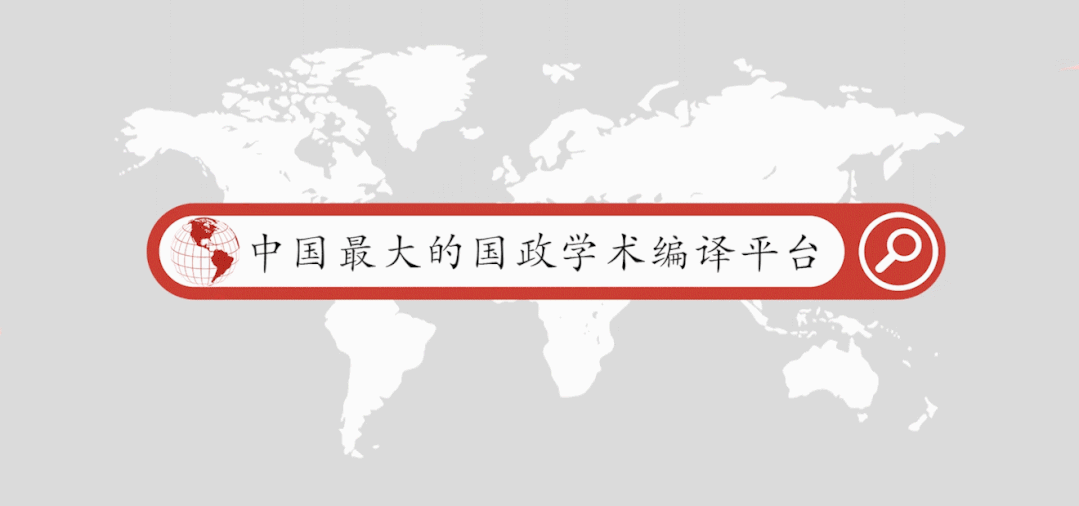







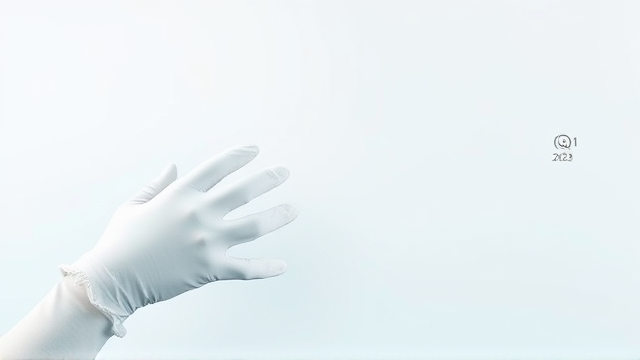
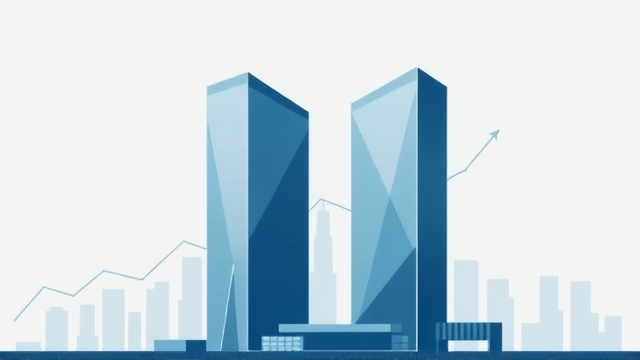

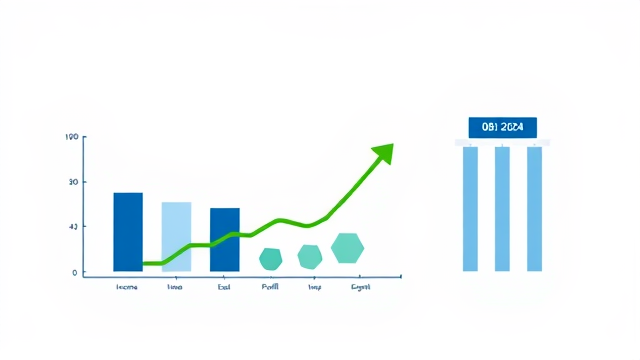
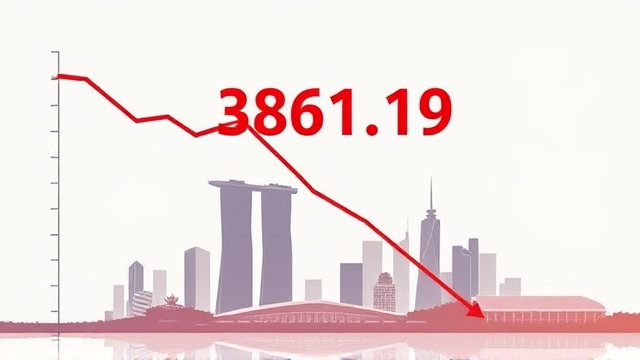


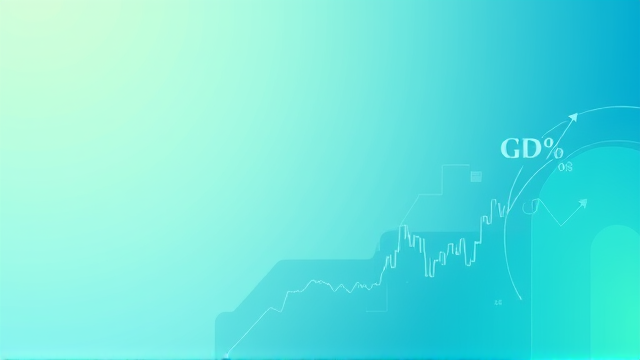
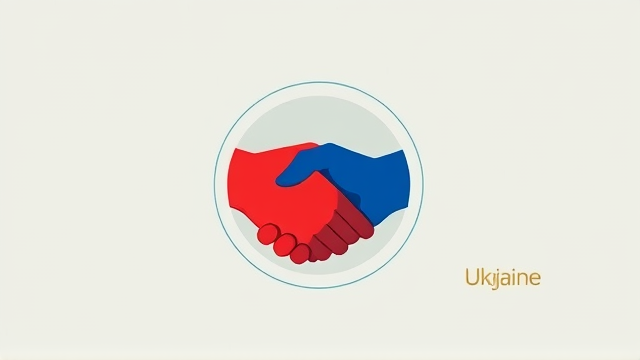
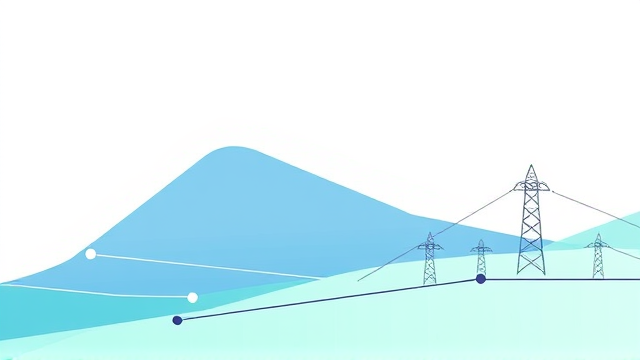
评论